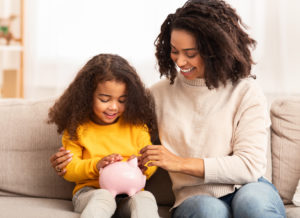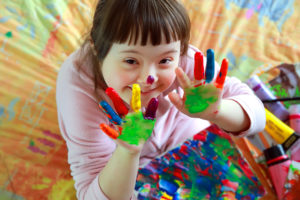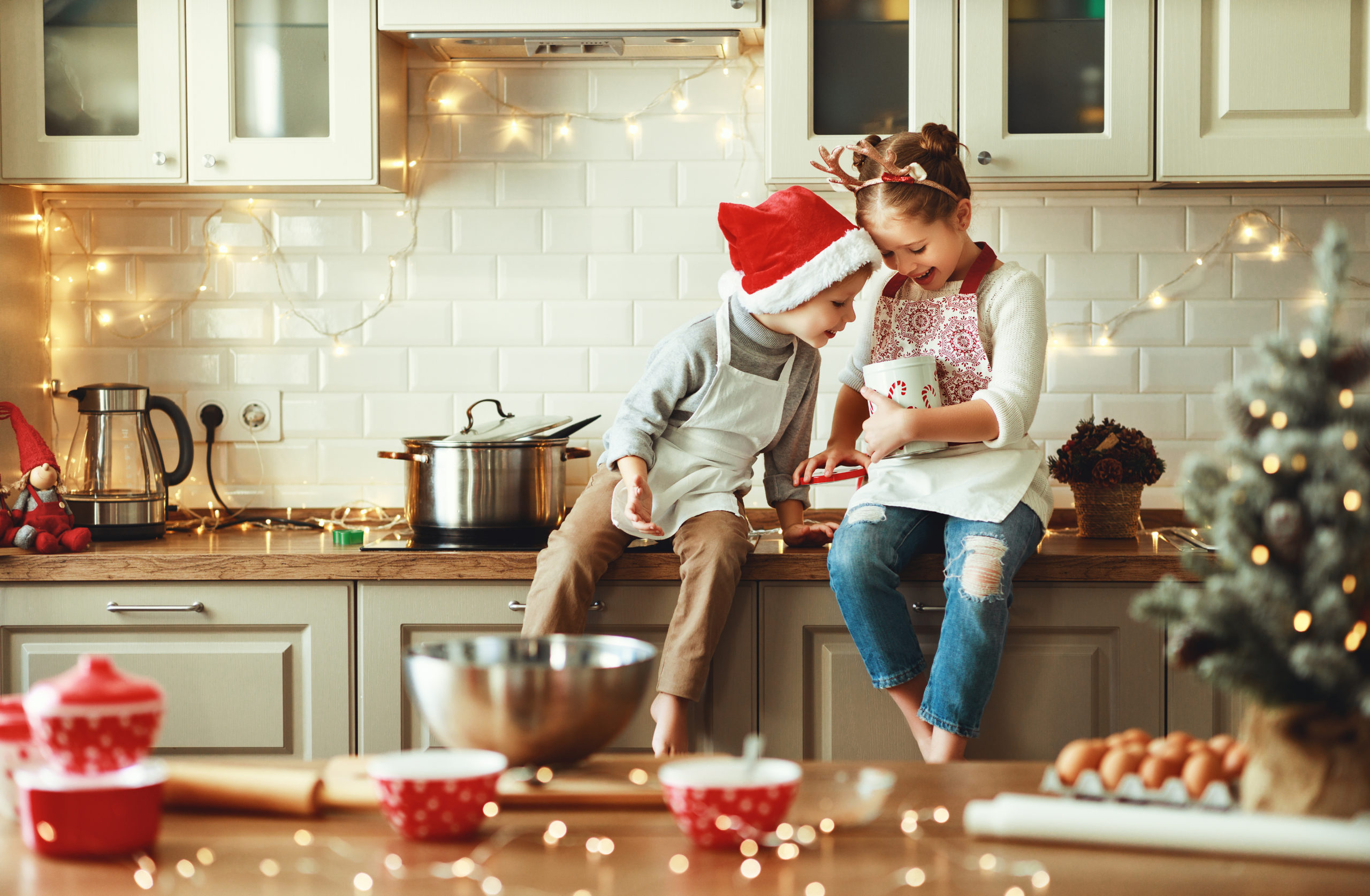One of my favorite things about homeschooling is the flexibility. You have the opportunity to work your school schedule around your life, instead of the other way around. For many, this might mean schooling at night, or forgoing traditional summer vacations in favor of smaller vacations throughout other parts of the year.
For some homeschooling families, this can even mean taking off during the holidays!
Yes, that’s right: from Thanksgiving to after Christmas (or New Year.)
And actually, while it seems like a lot of time off, I personally think that this approach makes a lot of sense.
My first job out of college was teaching at a private school, and I have to say that cramming in formal education between the holidays is tricky. Kids (and teachers) are dreaming about vacation. Everyone has is on a constant sugar high. Everyone wants to do holiday-related things. I’m pretty sure that most public and private school teachers would agree that not a lot of formal learning gets accomplished between Thanksgiving and Christmas break, even though classes are technically “in session.”
However, the holidays present a different opportunity for homeschooling families–the opportunity to make some great family memories, have fun and incorporate some hands-on learning that your kids will always remember.
The many things you find yourself doing this time of year, from honoring well-loved family traditions to baking or Christmas shopping, all present creative ways to learn. Therefore- whether you take a break from “formal” schoolwork or not- it makes all the sense in the world to get into holiday season in your homeschool! Here are 6 creative, educational (and fun) holiday activities that you can use in your homeschool this season!
7 Educational Holiday Activities for Homeschoolers
1. Read and Discuss A Christmas Carol
Many families love to get into the Christmas spirit by reading Charles Dicken’s classic novella, A Christmas Carol. Doing so is definitely a fun and educational activity to incorporate into your homeschool during the holiday season.
However, reading The Christmas Carol is just the tip of the iceberg. This wonderful little book presents a lot of tangential learning opportunities. For example, in addition to studying themes and ideas of A Christmas Carol, you might also want to study the life of Charles Dickens.
And in studying Charles Dickens, you will inevitably come across the way his life was shaped by the influential historical movement of the Industrial Revolution (and the reign of Queen Victoria.)
In studying the Victorian Era, you will find all kinds of other relevant learning to share with your homeschoolers (from Imperialism to many of the Victorian Christmas traditions that we still honor today).
I know I’m starting to sound a bit like the children’s book, If You Give a Mouse a Cookie, right now, but it’s true: The Christmas Carol is a wonderful holiday tradition AND a wonderful gateway to learn about history, literature and even theatre!

Here are some ideas/ resources you may want to explore if you decide to dig into some A Christmas Carol inspired learning this holiday season.
- Read the book, obviously (out loud in front of a fireplace would be ideal!)
- Go see the play! Many community theatres perform this classic during the Christmas season.
- Watch the movie versions! There are a ton to choose from (including my personal favorite, The Muppet Christmas Carol). The Man Who Invented Christmas (2017) is also a fun and educational movie to watch, as it explores Dicken’s life in relation to his writing of A Christmas Carol.
- Study the life of Charles Dickens and talk about the class structure in England during his life. This short video has a good overview of his life.
- Try some of these Christmas Carol Project Ideas
- Study Victorian England! Here’s a free unit on Victorian England for your homeschool with a lot of fun and creative activities.
- Create your own Victorian Christmas! You might be surprised how many of our current Christmas traditions originated in Victorian England, thanks to Queen Victoria and her German husband, Albert. Check out these Victorian Christmas traditions in your homeschool to make your home merry and bright!
2. Learn about Christmas/Holiday Traditions Around the World
Your children may have already noticed that no two families celebrate the holidays in the exact same way. Even in the same country, we all have our own unique traditions. This season, so rich in its various traditions and cultures, can be a great time to teach your children about some different ways that other countries/cultures celebrate Christmas, and other holidays, too!
This website lists numerous countries where Christmas is celebrated around the world. If you have several children in your homeschool, it could be fun to assign each one with a different nation and have them plan a celebration according to that country’s traditions. Or you simply learn a little bit about a different country every day, and consider if there are any new traditions that your family would like to try!
Other holidays that fall around the same time:
If you are studying Christmas and other cultures, don’t forget to also learn about other holidays falling around the same time! It can be a great way to teach your children about cultures and beliefs of which they may not be aware.
The holiday of Hanukkah, also known as the “festival of lights,” is celebrated those of the Jewish faith this time of year (especially in America, since it falls around the same time as Christmas.) There are a lot of interesting facets and traditions of this Jewish holiday that you could learn more about in your homeschool.
Some people in the U.S. also participate in the celebration of Kwanzaa around this time of year. Kwanzaa celebrates cultural unity among African Americans and also provides a unique learning opportunity for those not familiar with it.
The Winter Solstice is more of a holiday of ancient times than of today. However, it would also be interesting to study in your homeschool from a historical lens because it influenced many of the traditions we use today to celebrate Christmas, the New Year, and the transition to winter.
3. Advent Activities
Do you do any kind of Christmas advent in your home? Advent is the period of time leading up to Christmas (typically the month of December) and it means “coming” in Latin. Creating some kind of advent calendar or activity as a way to prepare your heart and home for Christmas can be an easy (and educational) part of your homeschool!
There are a lot of ways you could customize this idea for your homeschool, whether you make a project of crafting a physical advent calendar, create a series of creative advent activities, or designate a special activity to do for each day in December.
If you are thinking about using an advent activity as part of your homeschool throughout the holidays, here are a few ideas and resources to get you started!
- This article in Country Living has 44 different DIY advent calendar ideas to inspire you to make your own!
- This Christmas Journal contains 25 days of Christmas-themed creative writing prompts to inspire your writer in the days leading up to Christmas!
- You may also want to check out this Christmas Kindness Calendar, which counts down the days until Christmas with acts of service that you can perform for others in the days leading up to the day.
4. Home Economics
For adults, the holidays are full of extra cooking, baking, and budgeting. These super important life skills may already be a part of your homeschoolers’ education. However, whether they are or not, you could consider December to be a good time for a accelerated course!
Home economics used to be a major part of a child’s education, but since it’s been a non-mandatory part of school, a lot of young-ish adults have to learn how to fend for themselves the hard way. You know what I mean: the whole “I can’t adult,” phenomenon.
The holidays are the perfect time to teach your children how to learn practical skills that will help them out when they are grown: how to make family-favorite recipes, how to prepare a home for company—even simple rules of etiquette. These things are worth knowing, and they are becoming a bit of a lost art.
You get the idea! There are a lot of ways you can bring practical learning into your homeschool during the holidays via cooking, cleaning, and decorating (plus the extra help could be really nice for you, too!)
5. Budgeting
Another part of home economics is household finances. We all know that Christmas is a time of year that puts even the savviest adult budgeteers to the test.
Use this as a life lesson and find some ways to involve your kids with making budgets and keeping up with spending! I’m not saying that you have to pull up all the household spreadsheets and say, “learn this,” to your teenager (I mean, you COULD).
There are a lot of small, non-overwhelming ways you can teach your kids about budgeting at Christmas. Here are a few ideas:
- Give your child a certain amount of money for a certain number of holiday dishes to make. He/she can plan each part of the process–finding the recipe, make the shopping list, and pricing it out. This is a great critical thinking AND math activity!
- Do you have several children? Do you trust them…a lot? If so, here’s an idea. Give each child a certain amount of money towards the decorating budget and ask them to work together to design and fulfill a holiday decorating theme: team building and design!
- Give your children jobs to do so that they can earn money to buy Christmas gifts. Help them create a “Christmas account” in which they figure out who they will get gifts for and how much they can spend.

6. Get Creative with DIY Gifts!
Creativity is such an important part of learning, and those who homeschool are especially fortunate to learn from getting creative, whenever possible!
This holiday season, inspire your kids’ creativity through prompting them to come up with some thoughtful, DIY gifts.
Help your kids brainstorm a gift list (this can easily overlap with the budgeting activity, if that’s something you plan to do) and think about what sorts of things they could make that would be meaningful for others.
- What is a skill or creative outlet that they’d like to put to the task?
- What would they like to say to others through the gifts that they create?
- What’s feasible, time-wise?
Here are a few ideas to consider as you help your child plan his/her DIY gift.
- Your child could use these courses on Sparketh for inspiration to create beautiful works of art for the special people in his or her life.
- Photo albums and scrapbooks also make meaningful gifts and could be a fun project for an older child or teen to put together.
- Your child could also write something special for family members. You could ask him/her to write a short story or poem and help get it printed and bound or framed.

7. Find a Cause to Support
Lastly, a heart-shaping, learning activity to do with your children this holiday season is to help him/her find and support a meaningful cause. This time of year, we often get so wrapped up in what we want, and what we “have to” do. Guiding your child to get invested in a meaningful cause is a great way to help him/her make a personal connection with the concept of reaching out to others.
Have a chat with your child/children to find out what types of issues make them want to get involved, and do some research together to choose an organization to which they’d like to contribute in some way (either financially or through volunteer service).
Depending on the age of your children, you could ask them to independently make a plan of action for how to help this organization/cause or you could be part of the planning process.
Either way, making a plan for how to get involved is a great activity that fosters critical thinking skills and a heart that’s willing to help others. One thing to consider as you plan: if your child wants to support a cause that is asking for financial contributions, how will he/she raise the money for that cause?
(If you attend church, you may also check with your church leadership to see what kind of service opportunities are available to your children via your church community. Choosing something local will yield opportunities for them to be physically involved.)
This is a formative activity that will shape your child’s heart and affect how he/she interacts with the world for many years to come, which certainly makes for a very meaningful learning opportunity!
As you can see, there are many ways for your children to learn non-traditionally throughout the holiday season. Do you plan to keep up with formal school plans throughout December, or rely more heavily on a learn- from-life approach during the holiday season? Which of these learning opportunities do you take advantage of already, and what would you add to the list?
Written by: Kathryn Gustafson


